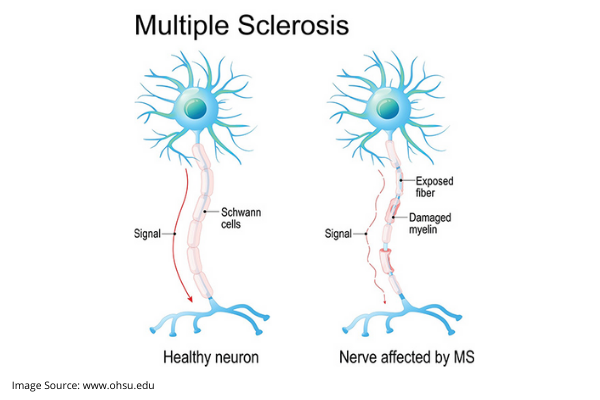

TREATMENT OPTIONS FOR MULTIPLE SCLEROSIS

Multiple sclerosis is one of those rare diseases that man is still unable to find a cure for. This potentially disabling disease affects the brain and spine (central nervous system), where the body’s immune system attacks the protective sheaths covering its own nerve fibers. This results in miscommunication signals between the brain and the rest of the body and eventually leads to nerve deterioration and permanent damage.
The progress, severity and symptoms of multiple sclerosis vary from one patient to another and there is no way to predict the prognosis of the disease in each patient. This becomes particularly relevant as there is no cure for the disease. This condition is usually diagnosed between the ages of 20 and 50 years and is more common in women than men.
The signs and symptoms of multiple sclerosis (MS) are dependent on the amount of nerve damage and which specific nerves have been damaged. This means that while some patients might lose the ability to walk independently, others might have problems with vision. And yet some other patients might experience such mild symptoms that they don’t even need any treatment! Then there are those that experience long periods of remission without any signs or symptoms.
There are typically four different types of MS:
- Relapsing-remitting MS (RRMS) – this is the most common form.
- Secondary-Progressive MS (SPMS) – symptoms worsen gradually with time with or without relapses and remission.
- Primary-Progressive MS (PPMS)
- Progressive-Relapsing MS (PRMS)
Even though there is no complete cure for this condition, treatment focuses on speeding up recovery from attacks, physical therapy as well as prolonging remission periods, slowing down the progress of the disease and managing its symptoms. As MS is a complex condition, a team of specialists including a neurologist, urologist and physiotherapist, etc, may be involved. An occupational therapist may be useful in guiding and improving the daily life skills for the patient to make life easier.
For treatment of MS attacks, steroids may be used to reduce nerve inflammation along with plasma exchange for severe symptoms that aren’t responding to steroids.
Treatment options for RRMS include the use of beta interferon injections which can reduce the incidence of relapses. There are many other medications too that can be given either intra-dermally or orally to control the symptoms; most of these medications however come with a series of side-effects that need to be monitored vigilantly.
Physical therapy is helpful in managing the symptoms of MS. Stretching and strengthening exercises make it easier to perform day-to-day tasks and also help in managing leg weakness and gait, a problem often associated with MS. Physiotherapy along with medications may also help in relaxing stressed-out muscles and reducing fatigue.
Alternative complimentary therapies like acupuncture, yoga and the use of marijuana may help to an extent in MS, when combined with regular treatments. Other therapies like bee stings and cobra venom have been proposed too, but they are mostly hype.














